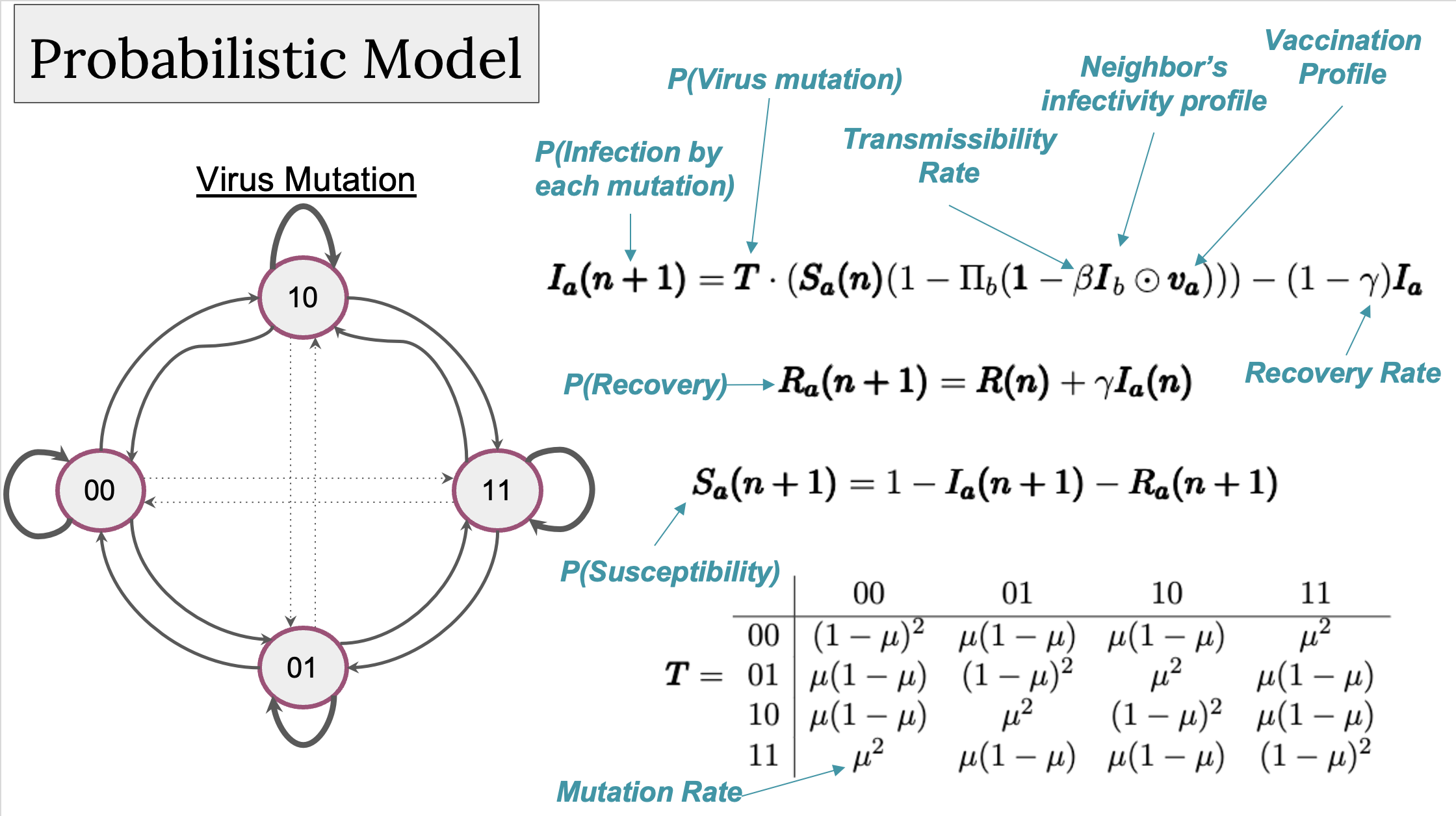Spatial patterns of immunity across a population are structured both by natural processes, such as evolutionary history and past epidemics, and by artificial processes, such as vaccination. The diversity of immune types in a population is known to influence pathogen evolution and epidemic dynamics: populations with many immune types are often more robust to epidemics, since a pathogen cannot widely circulate until it evolves the ability to evade many of the established immune types. However, little is known about the effect of the spatial distribution of these immune types on the evolution and transmission of an infectious disease. In this project, we use both a mean-field mathematical model and an agent-based model to understand how “clumpiness” in the spatial distribution of immune types influences the evolutionary and epidemiological dynamics of an infectious disease. Clumpier spatial distributions (higher values of p in Figure 1) contain larger patches of identical immune types and enable less contact between individuals with different immune types. In both of our models we consider a two-dimensional grid with each cell assigned to one of several immune types (Figure 1). A wild-type contagion (which is able to infect only one immune type) is randomly seeded at one cell. We model disease spread between neighbors using an SIR framework, and we model pathogen evolution by allowing for rare, random mutations which generate disease variants that are able to evade one or more of the established immune types. So far, we have found that more clumpy immune type distributions generally result in more cumulative infections and longer epidemics. While the current model focuses on the spatial distribution of vaccines, we anticipate that our analysis will be relevant to many systems which obey similar rules, such as agricultural systems, the spread of beliefs, and zoonosis in multi-host ecosystems.
Collaborators:
Jennifer Briggs1, Gates Dupont2, Ian Harryman3, Haoyuan Luo4, Maike Morrison3, David O’Gara5, Simon Rella6 1 University of Colorado Anschutz Medical Campus, 2 Princeton University, 3 Stanford University, 4 University of Illinois Urbana-Champaign, 5 Washington University in St. Louis, 6 Institute of Science and Technology Austria
Corresponding author: Maike Morrison, maikem@stanford.edu
